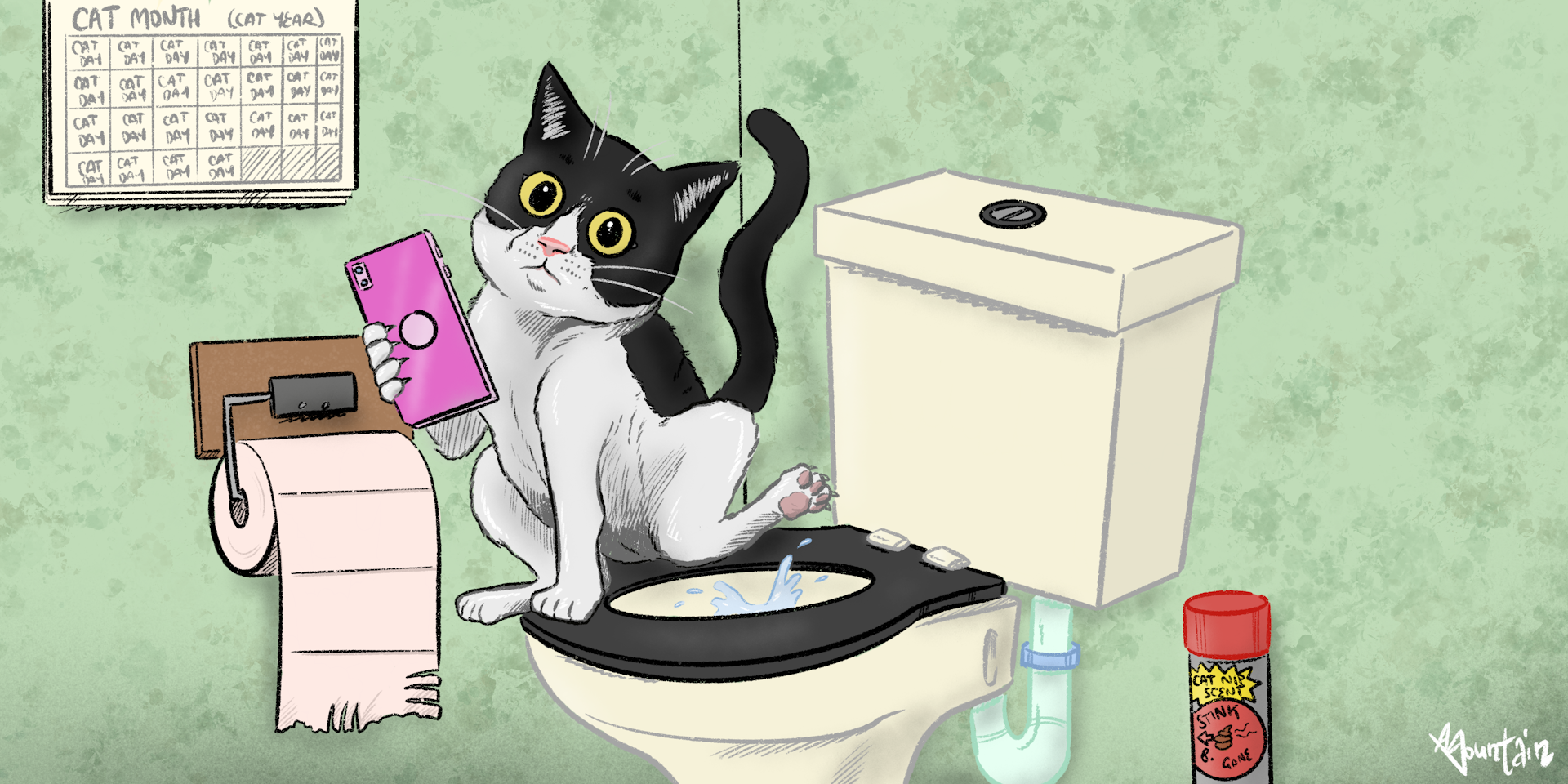Potential Issues of Flushing Cat Poop Down Your Toilet - Safeguard Your Pipes
Potential Issues of Flushing Cat Poop Down Your Toilet - Safeguard Your Pipes
Blog Article
Right here in the next paragraph you'll find some sensible advice with regards to Don’t flush cat feces down the toilet.

Intro
As pet cat proprietors, it's necessary to be mindful of just how we get rid of our feline buddies' waste. While it may appear practical to purge feline poop down the commode, this technique can have damaging repercussions for both the setting and human wellness.
Environmental Impact
Purging pet cat poop presents harmful virus and bloodsuckers into the supply of water, positioning a significant risk to marine environments. These impurities can adversely affect marine life and concession water high quality.
Health Risks
In addition to environmental concerns, purging feline waste can also pose health risks to people. Pet cat feces may have Toxoplasma gondii, a bloodsucker that can create toxoplasmosis-- a potentially serious disease, particularly for expectant women and individuals with weakened body immune systems.
Alternatives to Flushing
Fortunately, there are much safer and more accountable means to take care of cat poop. Consider the following options:
1. Scoop and Dispose in Trash
One of the most common method of disposing of feline poop is to scoop it right into a biodegradable bag and throw it in the trash. Make certain to make use of a dedicated trash scoop and dispose of the waste quickly.
2. Use Biodegradable Litter
Choose biodegradable feline litter made from materials such as corn or wheat. These clutters are environmentally friendly and can be safely thrown away in the trash.
3. Bury in the Yard
If you have a lawn, take into consideration burying pet cat waste in a designated location far from veggie yards and water sources. Make certain to dig deep adequate to prevent contamination of groundwater.
4. Install a Pet Waste Disposal System
Buy a pet dog waste disposal system particularly developed for pet cat waste. These systems make use of enzymes to break down the waste, minimizing odor and ecological influence.
Final thought
Liable pet dog possession extends past providing food and shelter-- it also involves proper waste monitoring. By refraining from purging cat poop down the commode and selecting alternate disposal approaches, we can lessen our ecological impact and shield human health.
Why Can’t I Flush Cat Poop?
It Spreads a Parasite
Cats are frequently infected with a parasite called toxoplasma gondii. The parasite causes an infection called toxoplasmosis. It is usually harmless to cats. The parasite only uses cat poop as a host for its eggs. Otherwise, the cat’s immune system usually keeps the infection at low enough levels to maintain its own health. But it does not stop the develop of eggs. These eggs are tiny and surprisingly tough. They may survive for a year before they begin to grow. But that’s the problem.
Our wastewater system is not designed to deal with toxoplasmosis eggs. Instead, most eggs will flush from your toilet into sewers and wastewater management plants. After the sewage is treated for many other harmful things in it, it is typically released into local rivers, lakes, or oceans. Here, the toxoplasmosis eggs can find new hosts, including starfish, crabs, otters, and many other wildlife. For many, this is a significant risk to their health. Toxoplasmosis can also end up infecting water sources that are important for agriculture, which means our deer, pigs, and sheep can get infected too.
Is There Risk to Humans?
There can be a risk to human life from flushing cat poop down the toilet. If you do so, the parasites from your cat’s poop can end up in shellfish, game animals, or livestock. If this meat is then served raw or undercooked, the people who eat it can get sick.
In fact, according to the CDC, 40 million people in the United States are infected with toxoplasma gondii. They get it from exposure to infected seafood, or from some kind of cat poop contamination, like drinking from a stream that is contaminated or touching anything that has come into contact with cat poop. That includes just cleaning a cat litter box.
Most people who get infected with these parasites will not develop any symptoms. However, for pregnant women or for those with compromised immune systems, the parasite can cause severe health problems.
How to Handle Cat Poop
The best way to handle cat poop is actually to clean the box more often. The eggs that the parasite sheds will not become active until one to five days after the cat poops. That means that if you clean daily, you’re much less likely to come into direct contact with infectious eggs.
That said, always dispose of cat poop in the garbage and not down the toilet. Wash your hands before and after you clean the litter box, and bring the bag of poop right outside to your garbage bins.
https://trenchlesssolutionsusa.com/why-cant-i-flush-cat-poop/

I discovered that piece about How to Dispose of Cat Poop and Litter Without Plastic Bags while perusing the internet. Remember to take the time to share this write-up if you enjoyed it. Thanks a bunch for your time. Visit again soon.
Make An Appointment Report this page